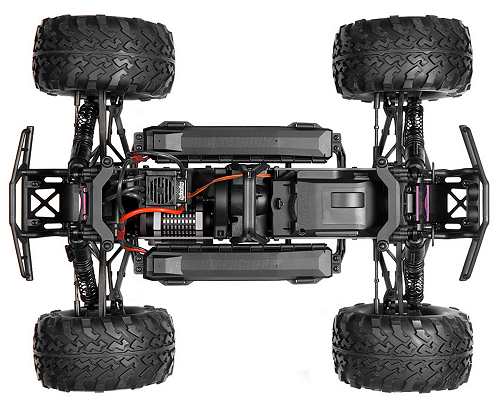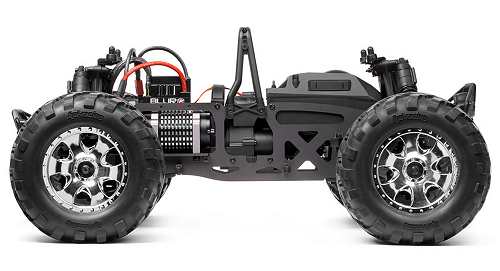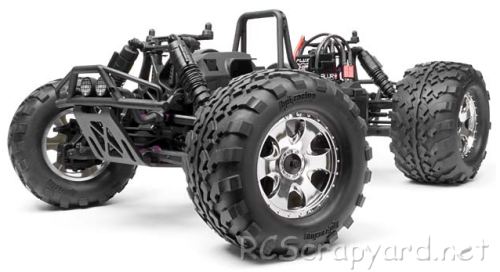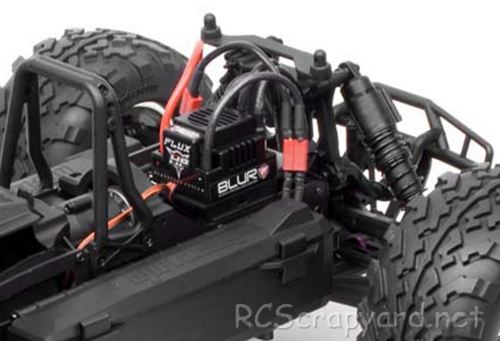

|
|
|


|
|
1/8 Scale Electric Monster Truck:
HPI Savage Flux HP - # 104240 / # 104242 (Radio Controlled Model Review)History and Info:
Introduced by HPI (Hobby Products International) in 2010, the Savage Flux HP Monster Truck - # 104240 / # 104242 - came factory assembled RTR, with a pre-painted bodyshell, Flux Tork 2200 motor, Flux Blur ESC and 2.4Ghz radio system. A number of other Savage versions were available (Check out our HPI Archive).
▼ Scroll Down for More Images ▼
|








|
|
|

★ HPI Racing Savage Flux HP Chassis ★

★ HPI Racing Savage Flux HP ★

★ HPI Racing Savage Flux HP Chassis ★

★ HPI Racing Savage Flux HP Chassis ★

★ HPI Racing Savage Flux HP Chassis ★

★ HPI Racing Savage Flux HP Chassis ★

|
Buying a Used HPI Savage Flux HP
|
|
Manufacturers and Brands Catalogued and Listed by RC-Scrapyard.
At present, the RC Model Manufacturers, Brands and Distributors covered by us are: ABC Hobby, Academy, Acme Racing, Agama Racing, Amewi, Ansmann Racing, ARRMA, Team Associated, Atomic RC, Axial, AYK, Bolink, BSD Racing, Capricorn, Carisma, Carson, Caster Racing, Cen, Corally, Custom Works, Durango, Duratrax, ECX - Electrix, Exceed RC, FG Modellsport, FS-Racing, FTX, Fujimi, Gmade, GS-Racing, Harm, HBX, Helion, Heng Long, Himoto Racing, Hirobo, Hitari, Hobao, Hong-Nor, Hot Bodies, HPI, HSP, Intech, Integy, Jamara, JQ Products, Kawada, Kyosho, Losi, LRP, Maisto, Mardave, Marui, Maverick, MCD Racing, Megatech, Mugen, New Bright, Nichimo, Nikko, Nkok, Ofna, Pro-Pulse, Protech, PTI, RC4WD, Redcat Racing, RJ-Speed, Robitronic, Schumacher, Seben, Serpent, Smartech, Sportwerks, Step-Up, Tamiya, Team-C Racing, Team Magic, Thunder Tiger, Tomy, Top Racing, Traxxas, Trinity, Tyco, Vaterra RC, Venom, VRX Racing, WLToys, X-Factory, Xmods, Xpress, Xray, XTM, Yankee RC, Yokomo, ZD Racing and Zipzaps. |
|
Hints, Tips and Information Rechargeable Batteries
|
|
Hints, Tips and Information
Tire Compounds
Way back in the early 1990s when I first got into RC, most of the off-road models available came with chunky hard compound block tires that gave little or no grip on grass or dirt tracks. On-road didn't have this problem as they were still using sponge tires that with a coating of wintergreen based tire additive before each race to improve grip. There was even one guy who swore, before every race, he dipped his wheels in a glass of light ale. |
|
RC Models:
|
Radio & Motors: |
Other
Accessories: |